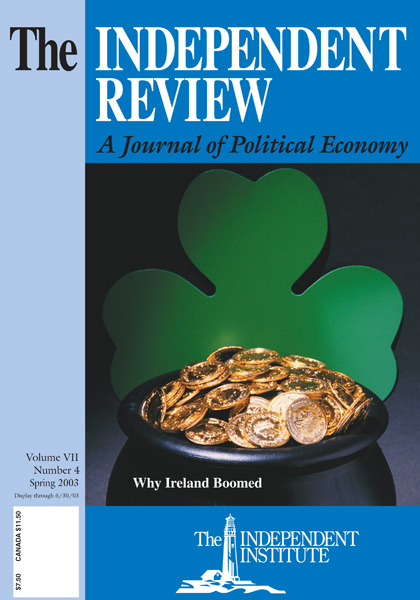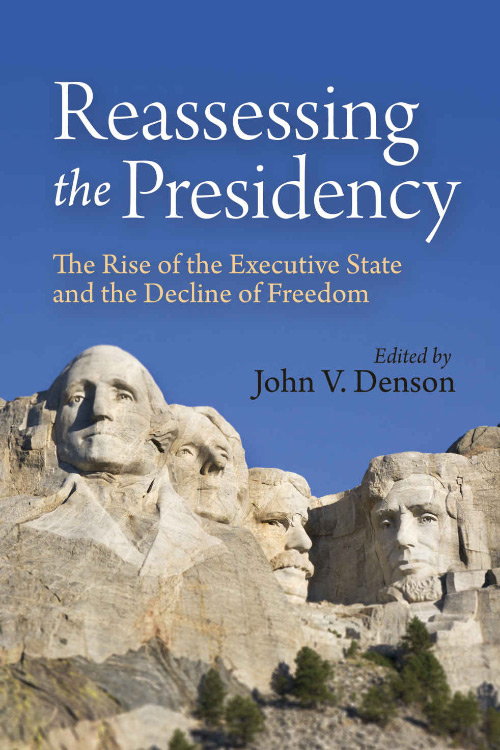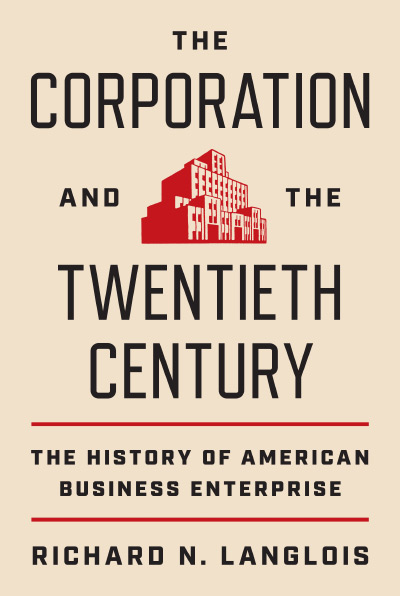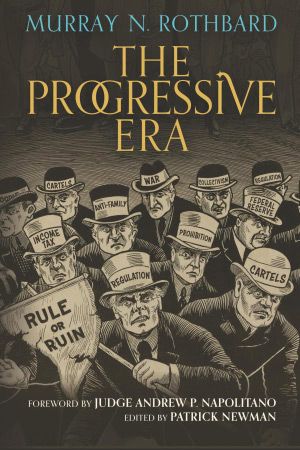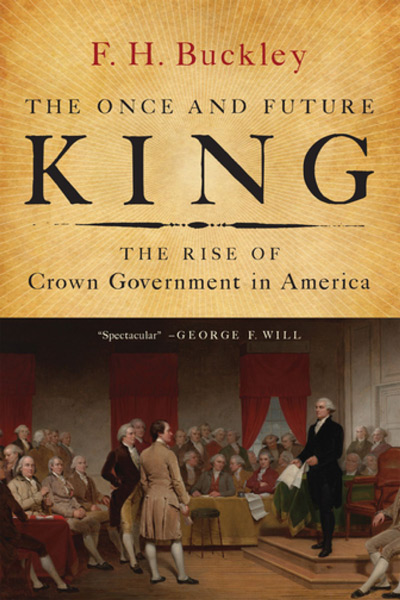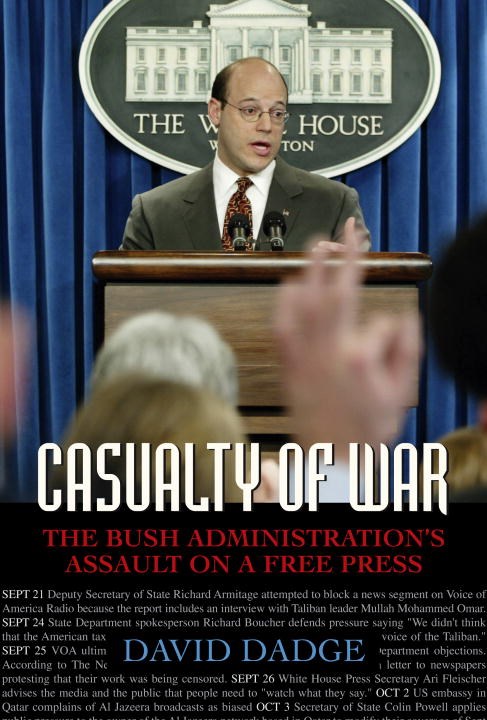“There cannot be too much of a correct theory,” Ludwig von Mises wrote in Epistemological Problems of Economics. This provocative claim inspires the methodology of Austrian economics scholarship against the doleful and misguided teaching of modern social science historicism. Evidence of its bracing influence outside the sphere of technical economic science is apparent in the historical essays presented in this new Ludwig von Mises Institute publication Reassessing the Presidency: The Rise of the Executive State and the Decline of Freedom, edited by John V. Denson.
Herbert Spencer, the great nineteenth-century libertarian, said of the relation between history and theory: “Until you have got a true theory of humanity, you cannot interpret history; and when you have got a true theory of humanity you do not want history.” The authors of Reassessing the Presidency generally subscribe to the philosophies of Mises and Murray Rothbard and are well equipped with a theory. Things have changed since Spencer wrote, however, for these authors are historical-minded libertarians, confidently deploying theory to interpret the U.S. Constitution and the executive power. For them, libertarian theory serves as an analytical calculus capable of explaining with breathtaking simplicity ideas and events that more pedestrian scholars, uninstructed in what Joseph R. Stromberg has referred to elsewhere as “libertarian dogma,” perceive as conflicting motives, purposes, and goods embedded in contexts of historical and political complexity.
The theory of liberty to which I refer is of course familiar to readers of this journal. How it is intended to guide normative reassessment of the presidency in the political-constitutional order may be less so. According to libertarian principles, liberty of the individual is the foundation and necessary condition of all other goods and indeed of civilization itself. The accounts presented in this volume further reflect the influence of Rothbard’s belief, as Llewellyn H. Rockwell expresses it, that “Once we understand why private property should be inviolable, troublesome notions fall by the wayside”—such as the conventional notion that a distinction exists between taxation and theft. In more specific terms, editor John V. Denson identifies the ground of classical liberalism on which the project is situated in stating that the liberty of citizens is threatened by their own government more than by any foreign government or domestic criminal.
As a contribution to constitutional history, Reassessing the Presidency has a fundamental flaw, however. It purports to tell the story of the loss of liberty at the hands of “power-hungry Caesars” who have filled the presidential office. In any but the most superficial sense, however, the book fails to examine the constitutional basis on which presidential power rests. Denson says the framers, influenced by classical liberal ideas, were concerned to protect liberty against both popular majorities and tyrannical central government. They intended for Congress to be the dominant branch of the federal government. Denson poses the question whether in the executive branch they created there was “too much latent power in the original creation of the office” or whether corrupt and misguided men aggrandized power external to the office. Inexplicably, however, nowhere in this book do framer intent and the design of the Constitution with respect to the executive power receive systematic analysis.
It is as though these libertarian scholars have decided they need not study debates about the actual constitution of government and the exercise of power. To do so may problematize received dogmas. It may compromise and offend, leading to the consideration of moral and political dilemmas that require reflection, choice, and prudential judgment, rather than asseveration of libertarian absolutes. Misesians know what they need to know: that the state is compulsion and coercion; that the story of human history is summed up in the eternal conflict of “liberty versus power.” All the rest is mere detail. Better to stand on the right, draw inspiration from correct theory, soldier on in the cause of the “unvanquished,” although “discarded,” ideal of anarchocapitalist liberty.
The principal conclusions of this idiosyncratic and uneven book can be summarized briefly. Although in theoretical and substantive terms ignoring the Founders’ Constitution, the collection offers elliptical commentary that conveys the idea that the constitutional order was flawed from the outset. That order gave ideologically corrupt and personally ambitious men opportunity to destroy liberty. Marshall DeRosa reflects the consensus in the volume:“The promise of the original constitutional system of separation of powers and federalism notwithstanding, constitutional liberalism contains the seeds of its own destruction and the inherent development of presidential powers which feeds off tensions between states’ rights and national government hegemony” (p. 106). Among statesmen of the early republic, only Thomas Jefferson offered libertarian hope of limited government. Yet, according to H. Arthur Scott Trask, Jefferson made fatal concessions to political expediency, party ideology, and popular opinion. Refusing to seek constitutional amendments that would define “prohibited powers so explicitly, as to defy the wiles of construction,” he failed to enact safeguards against “national centralism and neomercantilism”(p. 70).
After populist president Andrew Jackson repudiated the South Carolina antitariff nullifiers in the name of national union, explains Randall G. Holcombe, the idea of a limited federal government was “completely undone by the growth of democracy in America” (p. 167). After an elegiac interlude of limited government under Martin Van Buren, portrayed by Jeffrey Rogers Hummel, the stage was set for northern mercantilism under the ruthless dictatorship of Abraham Lincoln—which is the spiritual and ideological center of Reassessing the Presidency. In Thomas J. DiLorenzo’s view, Lincoln initiated the Civil War, trampled on the Constitution, and crushed the country’s only genuine hope for liberty: the valiant, if imprudent, attempt of Southern secessionists to redeem the libertarian promise of the Declaration of Independence by protecting slave property outside the Union.
With force and conviction, several authors in the collection relate outstanding moments in the decline of liberty in the twentieth century. Joseph R. Stromberg recounts the establishment of nonaristocratic, free-trade, U.S. imperialism under the skilled executive leadership of William McKinley. Informative, professionally oriented essays by Thomas W. Woods on Theodore Roosevelt, by George Bittlingmayer on antitrust policy, and by William Marina on William Howard Taft as an imperial bureaucrat bring the account to Franklin D. Roosevelt. Here Thomas DiLorenzo makes a second appearance, writing on economic fascism and pork-barrel politics in the New Deal, and John V. Denson analyzes Roosevelt’s deceit and deception in getting the United States into World War II. Perhaps the most significant essay from a professional standpoint is Ralph Raico’s contribution to Cold War revisionism, “Harry S. Truman: Advancing the Revolution.” Drawing on an extensive secondary literature and focusing on the decision to use the atomic bomb, Raico concludes: “If Harry Truman was not a war criminal, then no one ever was” (p. 586).
Raico’s stern moral judgment raises the question of “the kind of country one wishes America to be” (p. 567). After reading this book, however, one wonders whether this question is still open. The relentless and seemingly inevitable aggrandizement of power described in chapter after chapter suggests that the more pertinent question is, What, if anything, can be done to restore America’s lost liberty?
No matter how much correct theory lovers of liberty may lay claim to, the political question cannot be avoided. One writer recently asked: “if we [libertarians] are so obviously right, why does almost everybody reject libertarianism?” (Jan Narveson, Review of Problems of Market Liberalism, The Independent Review 4 [Winter 2000]: 445). Judging from the contents of Denson’s book, Misesians present themselves as the least political of people. They affect disdain for the passions, interests, and ideologies that motivate and complicate political life. They affirm theory over practice, principle over expediency. Their confidence in progress and rationality appears boundless, as when they assert that, if Southern slaveholders had been allowed to depart the Union in peace in 1861, they surely would have abolished slavery eventually in accordance with the dictates of classical liberalism.
In this book, discussion of the political question facing libertarians is left to Hans-Hermann Hoppe. In a highly imaginative essay, Hoppe argues that although limited government is impossible—a summary of the book’s findings—the more ambitious project of creating a world without any government at all does indeed lie within the realm of the possible. This outcome, it is hoped, will result from a second American Revolution, if Americans go back to the beginning, rightly understand their early history as a people, and correct for the mistakes made after the first American Revolution in 1776.
In the colonial period, Hoppe says, English settlers “demonstrated the viability” of “a stateless, anarcho-capitalist social order” (p. 667). After seceding from Great Britain, however, Americans made the mistake of reconstituting royal institutions as independent states, armed with powers to tax and to legislate. Then they made the “fateful error” of adopting the 1787 Constitution, which created a national system of politics that gave any person constitutionally protected entry into government and thus the opportunity “to openly express his desire for other men’s property” (p. 677). Under the Constitution, participation in government became impossible for anyone hampered by moral scruples against lying and stealing. In short order, political democracy led to “free competition in killing, stealing, counterfeiting, or swindling” (676).
The first thing to do, Hoppe asserts, is to recognize that the Constitution is an error: “it is itself unconstitutional, i.e. incompatible with the very doctrine of natural human rights that inspired the American Revolution” (p. 681). Hoppe’s anarchocapitalist strategy calls for an order of competing private insurance companies, which will provide law and order based on mutually reinforcing incentives that insurers and clients will have to maintain private property as an immutable law, prevent crime, and submit themselves to norms of nonaggressive civilized conduct. Of course, this order will require that insurance companies be freed from existing government regulations. Hoppe envisions this outcome occurring by means of a peaceful revolutionary movement that will create secessionist majorities in hundreds of locations throughout the country, until a change in national opinion brings down the government.
The memory of Southern secession inspires this vision. More important, says Hoppe, is to avoid the mistakes that doomed the pro-slavery secession movement in 1861. Think strategically; don’t play into the hands of the national power elite by orga-nizing secessionist opinion in a few states or in the entire South; employ the medieval practice of creating free towns and cities. Above all, counsels Hoppe, be“prudent”:“avoid any direct confrontation with the central government“ (p. 695). Do not seize government property within the free territory; rather, guarantee it. Simply deny the government’s right to future taxation and legislation concerning anyone and anything within this territory. Do so with appropriate diplomatic tact and the substantial support of public opinion. If this approach is taken,“it is difficult to imagine how the central government would dare to invade a territory and crush a group of people who had committed no other sin than trying to mind their own business” (p. 695 n.).
Hoppe offers a political morality of human action and design based on people as they are: selfish, vulnerable, in need of security, yet ultimately reasonable. This portrayal is not the rejectionist libertarian image that neosecessionists sometimes project. It is benign and peaceful, apparently intended to appeal to the 99 percent of the population who presently reject libertarianism. Is this the utopian vision of an unpolitical man? Or could it be that John Galt’s hour has come around at last? No, men are not angels, but it does appear that this Austrian economist is appealing to “the better angels of our nature.”
| Other Independent Review articles by Herman Belz | |
| Spring 2005 | The Constitution of Empire: Territorial Expansion and American Legal History |
| Winter 1996/97 | The Sacred Fire of Liberty: James Madison and the Founding of the Federal Republic |

